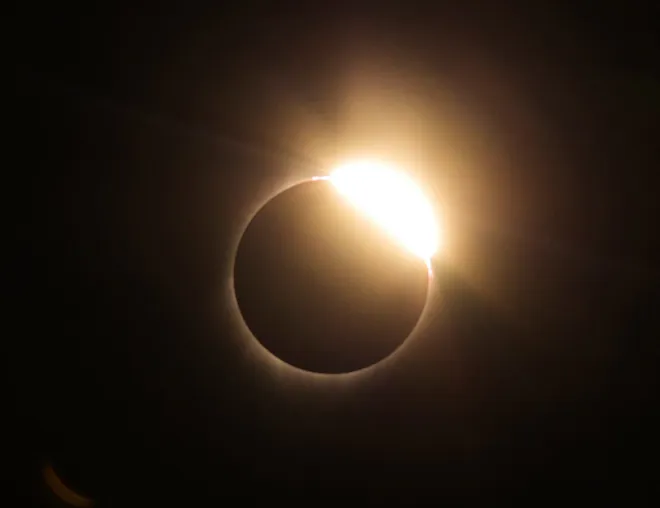The real April 2024 total solar eclipse happens inside the path of totality. What is that?
As the April 2024 total solar eclipse approaches, you may have heard folks talking about the "path of totality." But what is it, exactly? And what is totality?
First, some background: The April 8, 2024, eclipse will be a total solar eclipse, according to NASA. It will be the last total solar eclipse visible from the lower 48 states until 2044.
But what's key is that "only in the path will you see what's special about this eclipse — totality," Rick Fienberg of the American Astronomical Society told Space.com.

What is totality?
Totality is when the moon totally blocks the sun during a total solar eclipse.
What is the path of totality?
The path of totality is the area where people on Earth can see the moon completely cover the sun as the moon's shadow falls upon them. Space.com describes it as "the cone-shaped inner (umbral) shadow of the moon projected onto the Earth's surface."
Solar eclipse warnings pile up:Watch out for danger in the sky, on the ground on April 8
To view all of the stages of a total solar eclipse, you must watch it from somewhere along that path of totality, NASA said. Viewers outside this narrow, roughly 115-mile wide path will only see a partial eclipse of the sun.
Total solar eclipses are visible every 400 years from any one place, the Solar Observatory said.
Where is the path of totality in the US?
The path in the U.S. extends along a narrow stretch of land from Texas to Maine.
Not every place along the path of totality will provide the same viewing experience, in part because of cloud cover. Here's an early look at what areas are usually the most and least cloudy:
What happens during totality?
The sky will darken, as if it were dawn or dusk. "You may be able to see a 360-degree sunset. You may also be able to see some particularly bright stars or planets in the darkened sky. The air temperature will drop and often an eerie silence will settle around you," NASA said.
People along the path of totality will be able to see the sun’s corona, or outer atmosphere, which is usually obscured by the bright face of the sun.
And also this important reminder: Eclipse glasses are required for the eclipse if you're looking at it from outside the path of totality. Inside the path, you need the glasses for the moments before and after totality, when the moon is not totally blocking the sun.
Disclaimer: The copyright of this article belongs to the original author. Reposting this article is solely for the purpose of information dissemination and does not constitute any investment advice. If there is any infringement, please contact us immediately. We will make corrections or deletions as necessary. Thank you.




